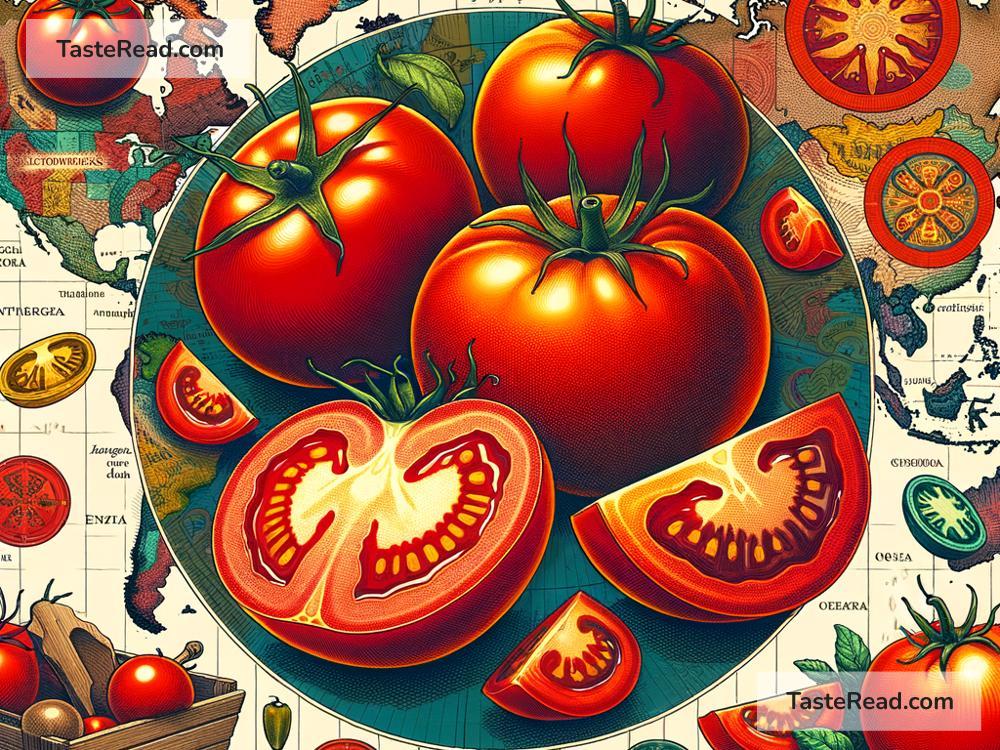The Fascinating Journey of Tomatoes From the Americas to Europe
Tomatoes are a staple ingredient in cuisines worldwide. From pizza sauce in Italy to salsa in Mexico, this vibrant fruit has become a key component in countless dishes. But did you know that tomatoes originally came from the Americas? The journey of tomatoes from the New World to Europe is a fascinating story of exploration, skepticism, and eventual culinary triumph.
The Origins of Tomatoes in the Americas
Tomatoes are native to South America, specifically the region that includes present-day Peru, Ecuador, and northern Chile. Wild tomato plants grew in these areas long before humans began cultivating them. Researchers believe that the indigenous peoples of the Andes were among the first to domesticate tomatoes thousands of years ago.
From South America, tomatoes gradually made their way northward to Central America and Mexico. By the time the Spanish arrived in the 1500s, the Aztecs were already growing and enjoying tomatoes. In fact, the word “tomato” comes from the Nahuatl (Aztec) word “tomatl.” The Aztecs used tomatoes in their cooking, combining them with chili peppers, beans, and other ingredients to create flavorful dishes.
The Arrival of Tomatoes in Europe
The story of tomatoes in Europe begins with Spanish explorers. In 1492, Christopher Columbus crossed the Atlantic and “discovered” the Americas, initiating a period of exploration and colonization. Soon after, Spanish conquistadors like Hernán Cortés encountered the tomato in Mexico and brought it back to Europe as part of the Columbian Exchange. The Columbian Exchange was a massive transfer of plants, animals, goods, and ideas between the Old World (Europe, Asia, and Africa) and the New World (the Americas).
When tomatoes first arrived in Europe in the early 1500s, people were unsure what to make of them. The fruit was striking in appearance, often bright red and round, but it was unfamiliar. Early European botanists classified tomatoes as a type of nightshade, a family of plants that includes some toxic species. This association led to widespread suspicion and fear.
Tomatoes: Friend or Foe?
During the 16th and 17th centuries, many Europeans believed tomatoes were poisonous. This fear wasn’t entirely unfounded—wealthy families often ate from plates made of pewter, a material that contained lead. The acidity in tomatoes could cause lead to leach into the food, potentially leading to lead poisoning. As a result, tomatoes earned the nickname “poison apple” in some circles.
Others were put off by the tomato’s strange appearance, labeling it exotic and untrustworthy. In some regions, tomatoes were used only as ornamental plants, valued for their colorful fruit but never eaten. The suspicion surrounding tomatoes lasted for decades, preventing them from becoming a mainstream food in Europe.
Italy’s Love Affair With Tomatoes
Despite initial skepticism, tomatoes slowly gained acceptance in Europe, with Italy playing a significant role in their culinary adoption. By the late 17th century, Italians began experimenting with tomatoes in cooking, creating simple sauces and dishes. Italian cooks found that tomatoes paired beautifully with pasta, bread, and olive oil. The fruit’s tangy flavor and bright color quickly became popular.
Tomato-based dishes spread throughout Italy, evolving into classics like pizza and spaghetti with marinara sauce. By the 18th century, tomatoes were fully embraced in Italian cuisine, earning their place as a centerpiece of the Mediterranean diet.
France and Other European Nations Warm Up To Tomatoes
France also contributed to the widespread use of tomatoes in Europe. French chefs and gardeners played a key role in cultivating and popularizing tomatoes throughout the region. The fruit was called “pommes d’amour” or “love apples” in French, reflecting its growing popularity.
Other European nations were slower to accept tomatoes, but trade, cooking innovations, and science eventually helped change perceptions. Botanists clarified that tomatoes were not toxic, and cooks demonstrated their versatility in recipes. By the 18th and 19th centuries, tomatoes had become an essential part of European cuisine.
Global Domination: Tomatoes Today
The rise of tomatoes in Europe paved the way for their global popularity. As Europeans colonized other parts of the world, they took tomatoes with them, introducing the fruit to regions like Asia and Africa. Tomatoes adapted well to different climates and were easy to grow, making them a practical crop.
Today, tomatoes are one of the most widely consumed fruits in the world. According to the United Nations, over 180 million tons of tomatoes are produced globally each year. They serve as the base for countless sauces, soups, and condiments, and they’re a key ingredient in many salads and stir-fries. Whether you prefer a fresh slice of tomato on your sandwich or a rich tomato soup, it’s hard to imagine modern cooking without them.
Conclusion
The journey of tomatoes from the Americas to Europe is a remarkable story of cultural exchange and culinary evolution. From their origins in South America to their starring role in Italian and French kitchens, tomatoes have traveled far and overcome many hurdles. Today, they are a beloved part of cuisines around the world, proving that even the most unfamiliar foods can eventually win over hearts—and taste buds. So next time you enjoy a tomato-based dish, take a moment to appreciate the fascinating history behind this humble fruit.


